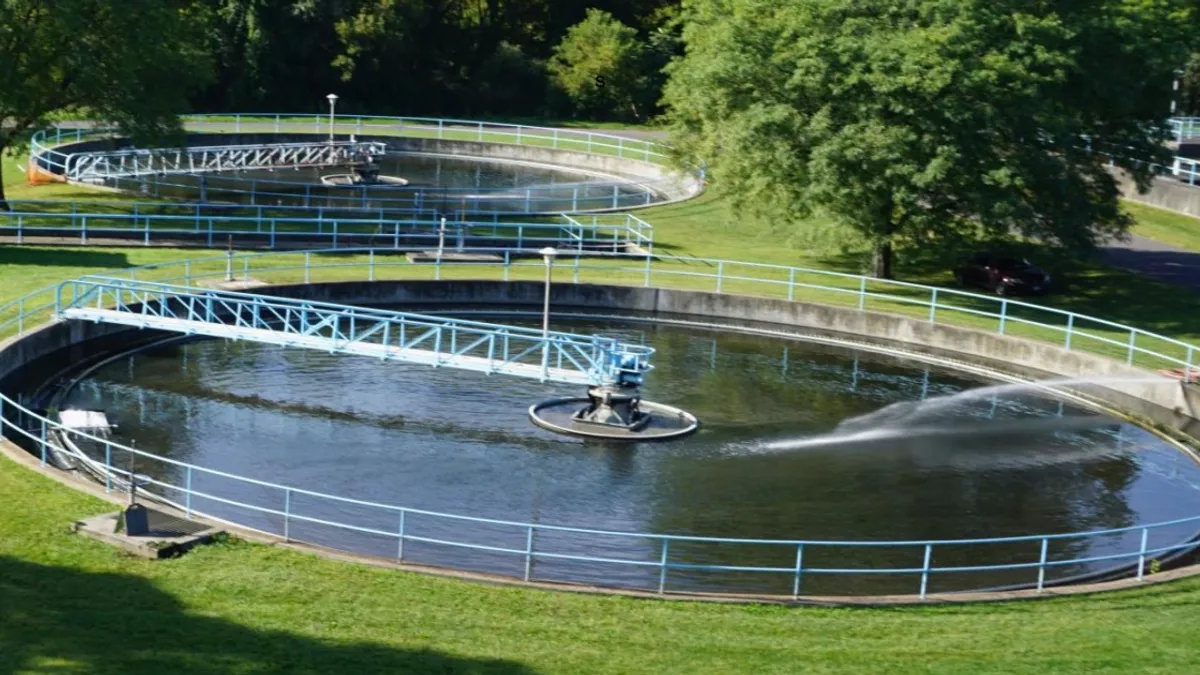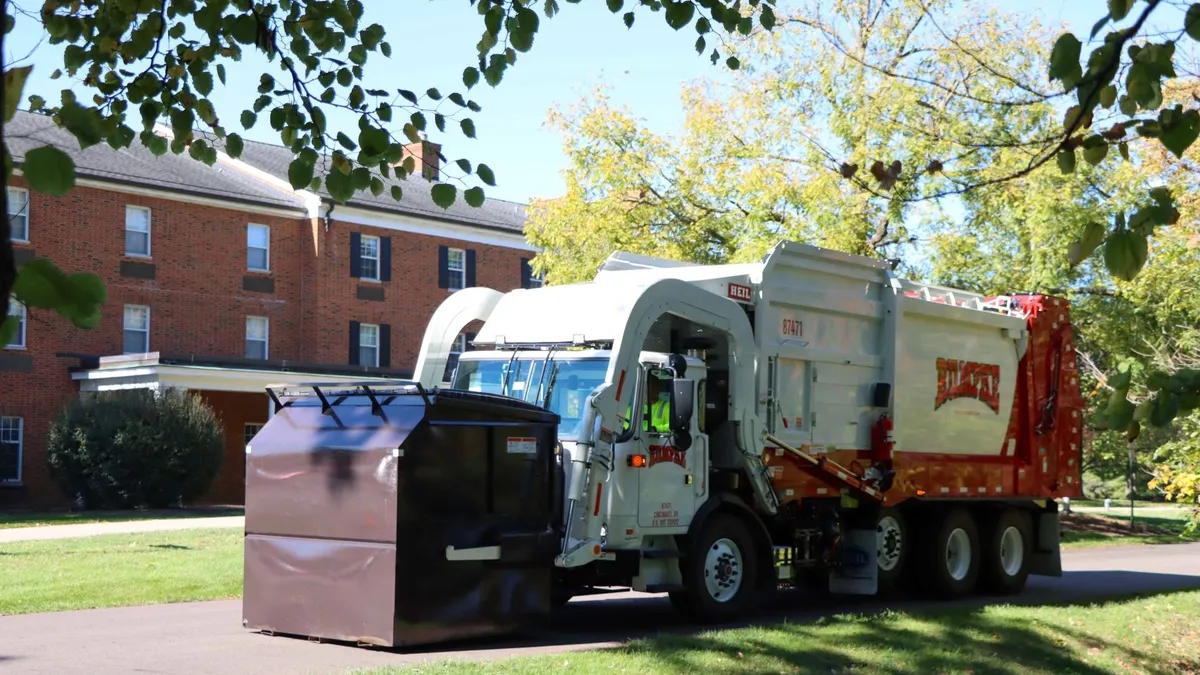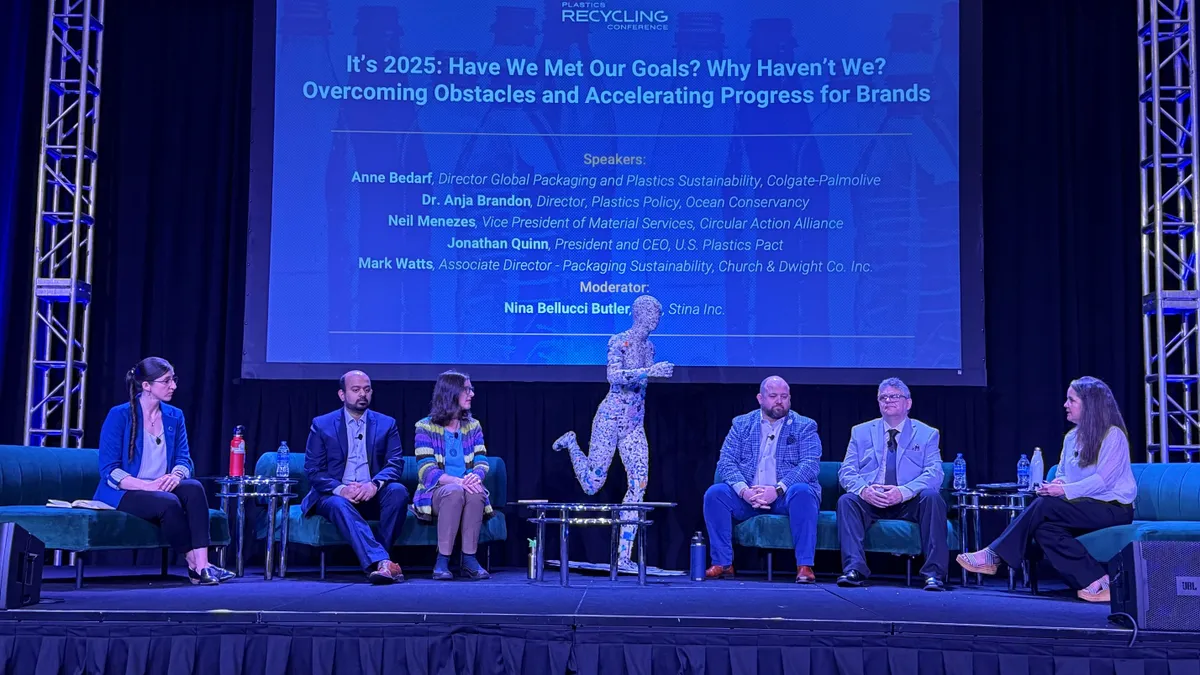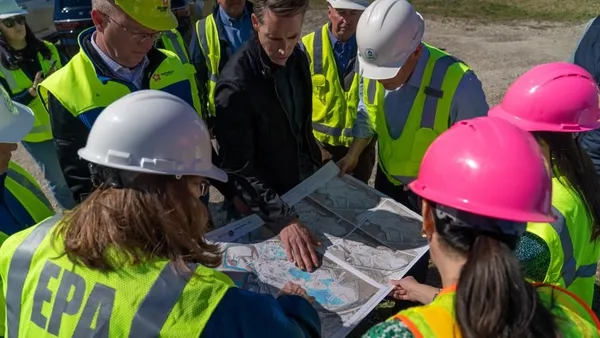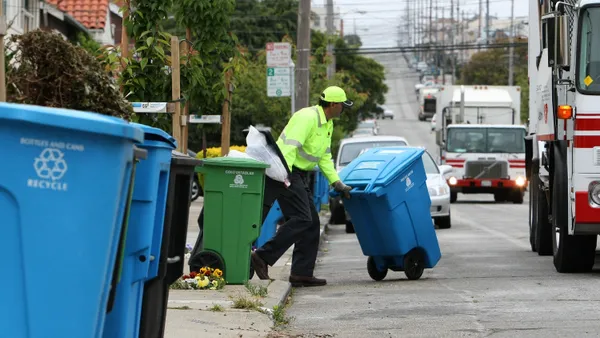Dive Brief:
- A coalition of environmental groups is urging the state of New York to issue a first-of-its-kind rule to require landfill operators to treat leachate on site, shifting the burden of addressing a myriad of contaminants from wastewater treatment plants to the operators.
- The request, sent in a letter on Jan. 17, comes after the state’s Department of Environmental Conservation previously held meetings to discuss updating its leachate regulation. Last year, the agency put a leachate rule update on its annual list of priorities, but ultimately did not propose a rule. DEC said it will follow through this year.
- In particular, the coalition, which includes Beyond Plastics, the Natural Resources Defense Council, Riverkeeper and the Hudson and Mohawk Rivers Leachate Collaborative, cited the U.S. EPA’s drinking water standard for PFOA and PFOS as a key limit in need of enforcement.
Dive Insight:
While environmental groups have long urged tight controls on landfill leachate due to the presence of heavy metals, synthetic chemicals and other toxic contaminants in the liquid, scrutiny has increased with the growing attention placed on PFAS, or per- and polyfluoroalkyl substances.
Researchers from the groups released a report last month detailing what they describe as the "leachate loophole." Through this loophole, landfill leachate contaminants that should be prevented from entering drinking water still do because operators ship the leachate to wastewater treatment plants for disposal.
The groups argue a double standard exists in current regulations, where landfills are required to monitor for pollutants in their leachate in order to avoid contaminating groundwater. But they say operators could send leachate with those same pollutants downstream to wastewater treatment plants or drinking water plants without effective filtration, possibly allowing those contaminants to harm communities who use the drinking water.
In addition to requiring on-site leachate treatment, the groups are urging DEC to write PFAS limits into wastewater treatment plants’ own water permits. They say doing so would allow plant operators to prevent PFAS from flowing into their facilities.
“The current regulatory system is failing to adequately address the leachate problem,” they groups wrote in their letter. “The rulemaking process would allow various stakeholders to collaborate in designing a system that is both equitable and efficient.”
DEC is currently developing a regulatory mechanism that would require active landfill operators to treat leachate for PFAS prior to discharge to waterways or a publicly owned treatment works, expected in 2025, per a statement from the agency.
DEC is also developing a strategy to address PFOA, PFOS and 1,4-dioxane that it expects to release “in early 2025.” It previously began requiring landfills to test leachate for those and other emerging contaminants in 2017.
“DEC is in receipt of this report and it is under review. DEC takes seriously our responsibility to oversee solid waste management facilities in the state and works transparently with communities every step of our review processes,” the statement read.
In their report, the researchers determined 24 landfills were sending leachate to 14 wastewater treatment plants in the Mohawk River and Hudson River Estuary watersheds. According to the report, that flow led to 89 million gallons of leachate that found its way to the watersheds without filtering for known leachate contaminants like PFAS and 1,4-dioxane.
Permits for each kind of facility along the path of leachate, from landfills to wastewater treatment plants to drinking water plants, require different kinds of pollutants to be monitored. The researchers note that of the 47 synthetic chemicals landfill operators are required to monitor in leachate, only two appear in wastewater treatment plant permits in their report's project area.
PFAS contamination is a core concern of the groups. They cite a DEC study that found that groundwater PFOA and PFOS concentrations exceeded the state's drinking water standard at 68% of the state's closed landfills tested to date. Within the report's project area, at least eight closed landfills showed groundwater PFAS concentrations above the drinking water standard.
The groups note this problem could also be growing. It looked at two active landfills owned by Waste Connections — the Dunn Mine and C&D Debris Landfill, which primarily receives C&D waste, and the Seneca Meadows Landfill, which is currently the largest active MSW landfill in the state.
The Dunn landfill, which began operations in 2015, quadrupled the volume of leachate it sent to a wastewater treatment plant between 2017 and 2023. As recently as 2023, Waste Connections reported PFOA and PFOS concentrations well in excess of reporting limits in samples taken at the site. Seneca Meadows, which began sending its leachate to the City of Amsterdam wastewater treatment plant in late 2023, has also reported high concentrations of PFAS chemicals.
Waste Connections executives did not respond to a request for comment on the report or on the proposal to reopen regulations for landfill leachate treatment. The company has a goal to process at least 50% of its landfill leachate at on-site facilities by 2033. It reported treating 37.4% of its leachate on-site in 2023, and the company said it was continuing to invest in new facilities in its 2024 sustainability report.
The company received a new operating permit for the Dunn site in December and is in the process of obtaining permits to expand the Seneca Meadows site.
The environmental groups are requesting a 90-day public comment period after DEC reopens leachate regulations.



